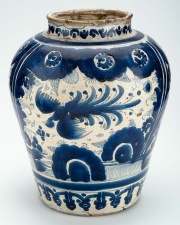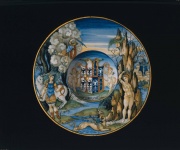Tin glaze
Jump to navigation
Jump to search
Description
An opaque, white Ceramic glaze that contains Stannic oxide. Tin glazing was discovered by the Assyrians in the 9th century. As it spread from Moorish Spain (Hispano-Moresque ware) through Europe, several popular types of tin glazing were developed including Majolica in Italy, Faience in France, and Delftware in Holland.
Synonyms and Related Terms
stanniferous glaze; glaçure stannique (Fr.); vidrado de estanho (Port.); tin-glazed earthenware; tin-enameled earthenware
Additional Images
Sources Checked for Data in Record
- Ralph Mayer, A Dictionary of Art Terms and Techniques, Harper and Row Publishers, New York, 1969 (also 1945 printing)
- Robert Fournier, Illustrated Dictionary of Practical Pottery, Chilton Book Company, Radnor, PA, 1992
- Encyclopedia Britannica, http://www.britannica.com Comment: "tin-glazed earthenware." Encyclopædia Britannica. 2005. Encyclopædia Britannica Premium Service 4 Feb. 2005 .
- Art and Architecture Thesaurus Online, http://www.getty.edu/research/tools/vocabulary/aat/, J. Paul Getty Trust, Los Angeles, 2000


